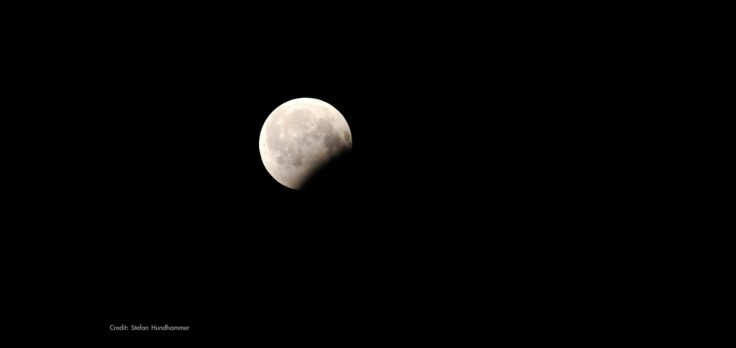Beaver Moon Lunar Eclipse 2021 will be the longest partial lunar eclipse of the century. It is also the last lunar eclipse of this year and will take place on November 19. The space event can be viewed from various parts of the world, including North and South America, some parts of Europe, Australia, and different regions of Asia. This rare eclipse will be rewarding to the skywatchers who might get to see the moon changing into a reddish hue.
The lunar eclipse will occur in the early hours of Friday. It will be the longest partial lunar eclipse in the last 580 years, according to Holcomb Observatory. The full eclipse will last for six hours and one minute, while the partial eclipse phase will be for three hours, 29 minutes, and 24 seconds. At maximum eclipse, 97 percent of the moon's face will be covered by the earth's shadow, and the moon might take a deep red color, the observatory added.
"Partial lunar eclipses might not be quite as spectacular as total lunar eclipses – where the moon will be covered in Earth's shadow – but they occur more frequently. And that means more opportunities to witness little changes in our solar system that sometimes occur right before our eyes," Nasa said.
So, here is how to enjoy this historical event from anywhere in the world, including the US, the UK, Canada, Australia, and other countries.

How to See Beaver Moon Lunar Eclipse 2021?
The partial lunar eclipse that will occur on November 19 will be visible from anywhere in the world where the moon appears above the horizon during the eclipse. At that time, the moon will slip into the earth's deepest shadow for several hours. If the weather permits, people from different locations can see this space event early or late in the evening depending on their time zone.
On the US East Coast, the moon will rise after 2 am EST, and it will reach its peak at 4 am EST. For people on the West Coast, the eclipse will begin at 11 pm and reach the maximum phase at 1 am. For people in Western Africa and Europe, the beginning part of the eclipse will be visible. Whereas those in Australia, Central Asia, and Southern Pacific can watch the eclipse while the moon rises. The exact time and place of the eclipse are available here.
It is also worth noting that the partial lunar eclipse of November will not be visible from Africa, Western Asia, and the Middle East.









